Jan Kautz
NVIDIA
Discovering Nonlinear Relations with Minimum Predictive Information Regularization
Jan 07, 2020
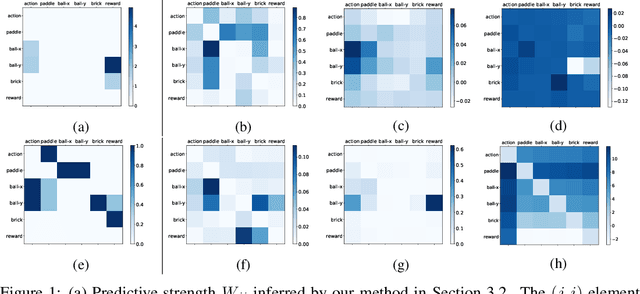

Abstract:Identifying the underlying directional relations from observational time series with nonlinear interactions and complex relational structures is key to a wide range of applications, yet remains a hard problem. In this work, we introduce a novel minimum predictive information regularization method to infer directional relations from time series, allowing deep learning models to discover nonlinear relations. Our method substantially outperforms other methods for learning nonlinear relations in synthetic datasets, and discovers the directional relations in a video game environment and a heart-rate vs. breath-rate dataset.
Meshlet Priors for 3D Mesh Reconstruction
Jan 06, 2020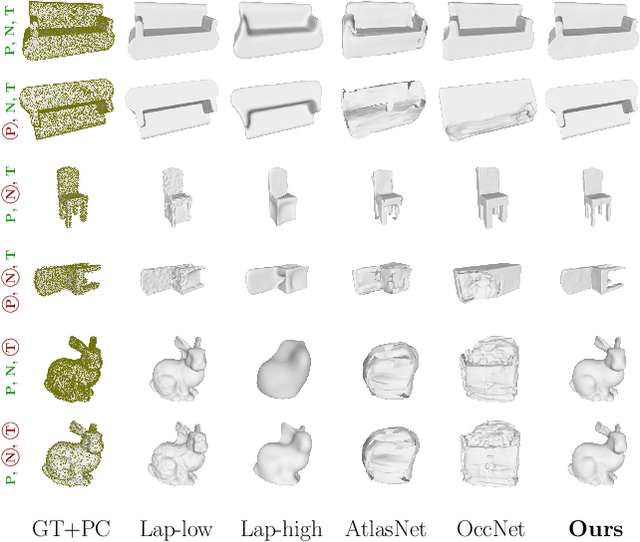
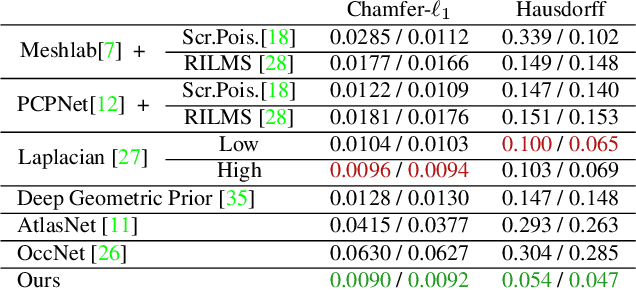
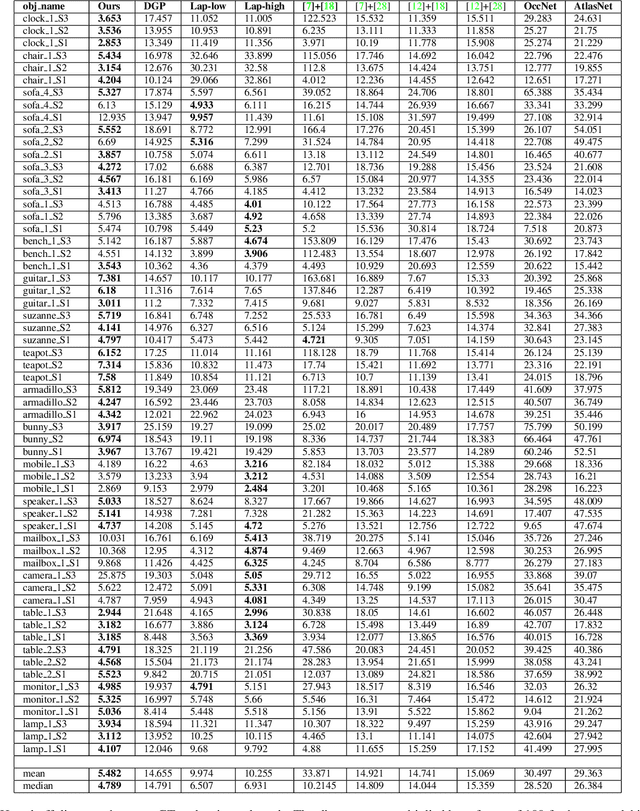
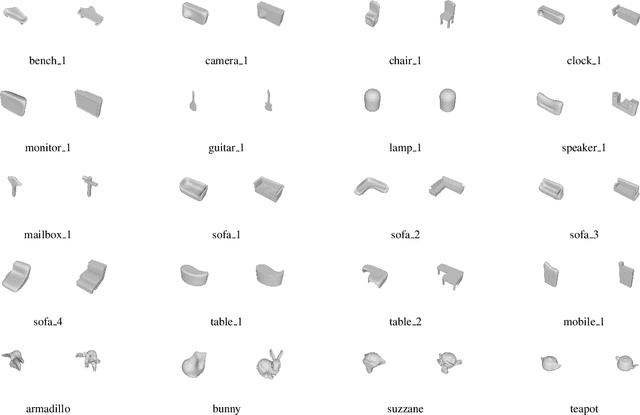
Abstract:Estimating a mesh from an unordered set of sparse, noisy 3D points is a challenging problem that requires carefully selected priors. Existing hand-crafted priors, such as smoothness regularizers, impose an undesirable trade-off between attenuating noise and preserving local detail. Recent deep-learning approaches produce impressive results by learning priors directly from the data. However, the priors are learned at the object level, which makes these algorithms class-specific, and even sensitive to the pose of the object. We introduce meshlets, small patches of mesh that we use to learn local shape priors. Meshlets act as a dictionary of local features and thus allow to use learned priors to reconstruct object meshes in any pose and from unseen classes, even when the noise is large and the samples sparse.
Angular Visual Hardness
Jan 04, 2020
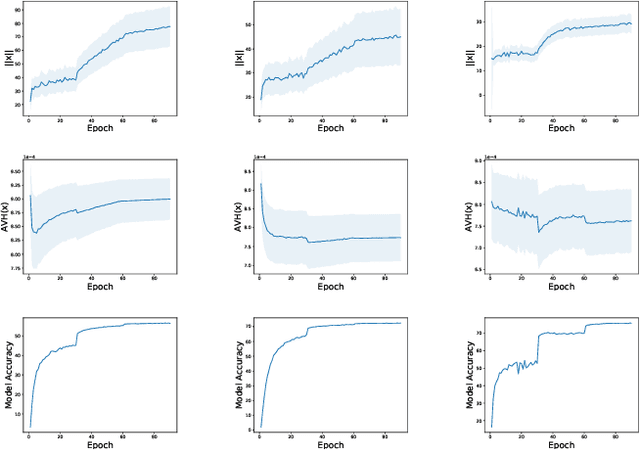

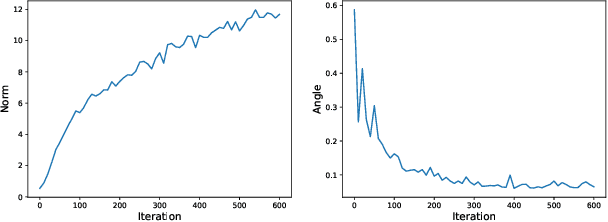
Abstract:Although convolutional neural networks (CNNs) are inspired by the mechanisms behind human visual systems, they diverge on many measures such as ambiguity or hardness. In this paper, we make a surprising discovery: there exists a (nearly) universal score function for CNNs whose correlation is statistically significant than the widely used model confidence with human visual hardness. We term this function as angular visual hardness (AVH) which is given by the normalized angular distance between a feature embedding and the classifier weights of the corresponding target category in a CNN. We conduct an in-depth scientific study. We observe that CNN models with the highest accuracy also have the best AVH scores. This agrees with an earlier finding that state-of-art models tend to improve on the classification of harder training examples. We find that AVH displays interesting dynamics during training: it quickly reaches a plateau even though the training loss keeps improving. This suggests the need for designing better loss functions that can target harder examples more effectively. Finally, we empirically show significant improvement in performance by using AVH as a measure of hardness in self-training methods for domain adaptation.
Dreaming to Distill: Data-free Knowledge Transfer via DeepInversion
Dec 18, 2019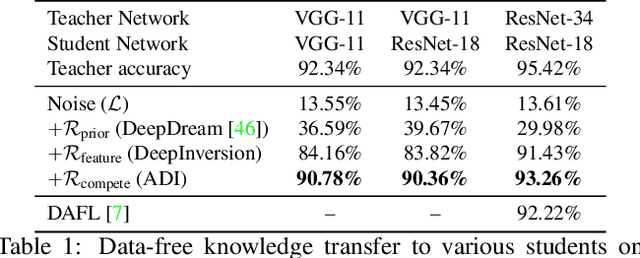

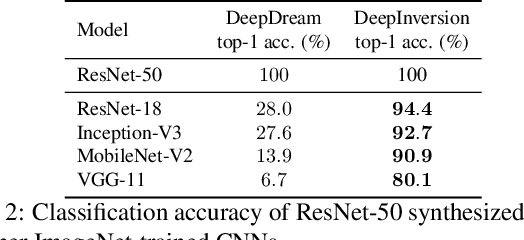
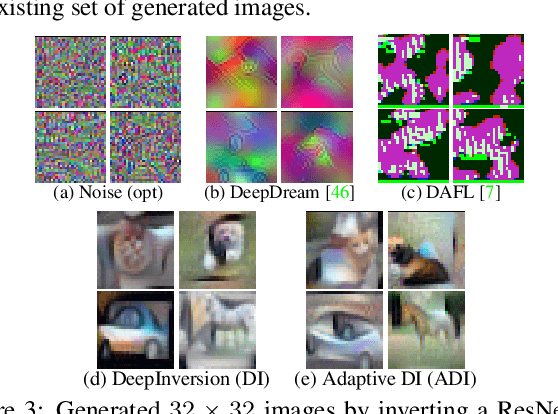
Abstract:We introduce DeepInversion, a new method for synthesizing images from the image distribution used to train a deep neural network. We 'invert' a trained network (teacher) to synthesize class-conditional input images starting from random noise, without using any additional information about the training dataset. Keeping the teacher fixed, our method optimizes the input while regularizing the distribution of intermediate feature maps using information stored in the batch normalization layers of the teacher. Further, we improve the diversity of synthesized images using Adaptive DeepInversion, which maximizes the Jensen-Shannon divergence between the teacher and student network logits. The resulting synthesized images from networks trained on the CIFAR-10 and ImageNet datasets demonstrate high fidelity and degree of realism, and help enable a new breed of data-free applications - ones that do not require any real images or labeled data. We demonstrate the applicability of our proposed method to three tasks of immense practical importance -- (i) data-free network pruning, (ii) data-free knowledge transfer, and (iii) data-free continual learning.
UNAS: Differentiable Architecture Search Meets Reinforcement Learning
Dec 16, 2019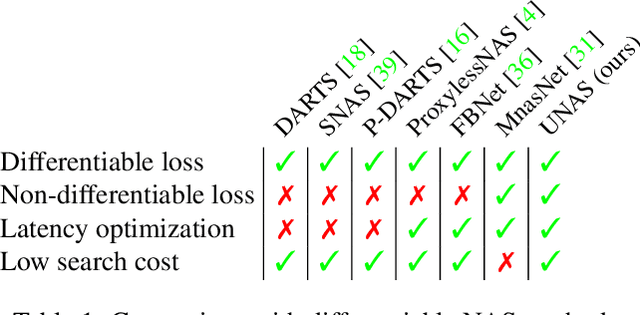
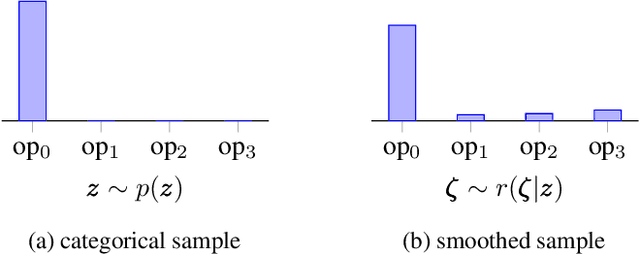

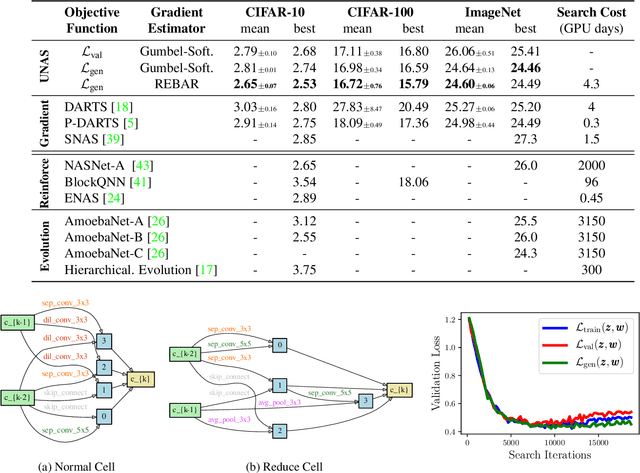
Abstract:Neural architecture search (NAS) aims to discover network architectures with desired properties such as high accuracy or low latency. Recently, differentiable NAS (DNAS) has demonstrated promising results while maintaining a search cost orders of magnitude lower than reinforcement learning (RL) based NAS. However, DNAS models can only optimize differentiable loss functions in search, and they require an accurate differentiable approximation of non-differentiable criteria. In this work, we present UNAS, a unified framework for NAS, that encapsulates recent DNAS and RL-based approaches under one framework. Our framework brings the best of both worlds, and it enables us to search for architectures with both differentiable and non-differentiable criteria in one unified framework while maintaining a low search cost. Further, we introduce a new objective function for search based on the generalization gap that prevents the selection of architectures prone to overfitting. We present extensive experiments on the CIFAR-10, CIFAR-100 and ImageNet datasets and we perform search in two fundamentally different search spaces. We show that UNAS obtains the state-of-the-art average accuracy on all three datasets when compared to the architectures searched in the DARTS space. Moreover, we show that UNAS can find an efficient and accurate architecture in the ProxylessNAS search space, that outperforms existing MobileNetV2 based architectures.
Dancing to Music
Nov 05, 2019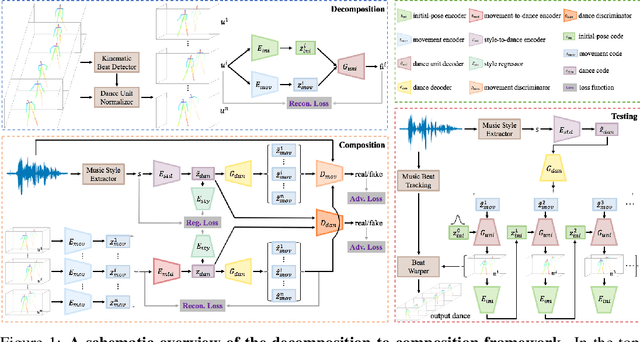


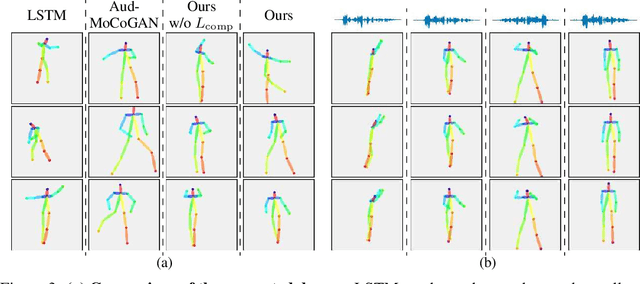
Abstract:Dancing to music is an instinctive move by humans. Learning to model the music-to-dance generation process is, however, a challenging problem. It requires significant efforts to measure the correlation between music and dance as one needs to simultaneously consider multiple aspects, such as style and beat of both music and dance. Additionally, dance is inherently multimodal and various following movements of a pose at any moment are equally likely. In this paper, we propose a synthesis-by-analysis learning framework to generate dance from music. In the analysis phase, we decompose a dance into a series of basic dance units, through which the model learns how to move. In the synthesis phase, the model learns how to compose a dance by organizing multiple basic dancing movements seamlessly according to the input music. Experimental qualitative and quantitative results demonstrate that the proposed method can synthesize realistic, diverse,style-consistent, and beat-matching dances from music.
Few-shot Video-to-Video Synthesis
Oct 28, 2019

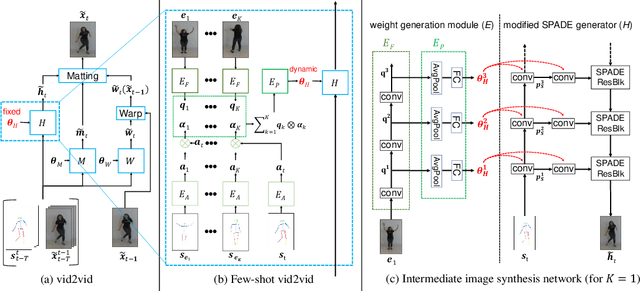
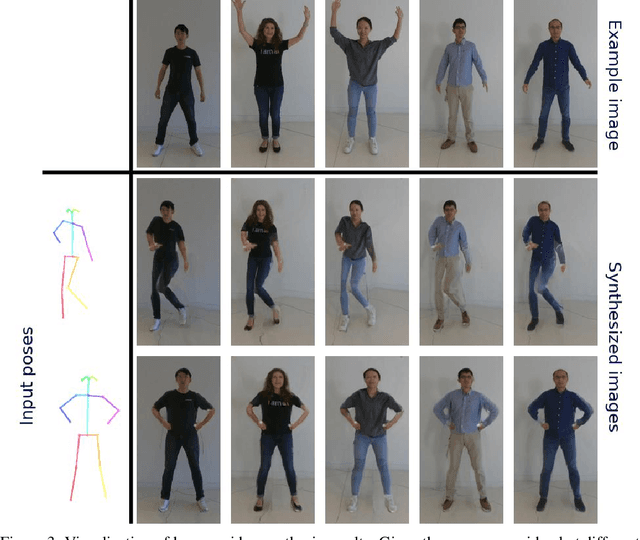
Abstract:Video-to-video synthesis (vid2vid) aims at converting an input semantic video, such as videos of human poses or segmentation masks, to an output photorealistic video. While the state-of-the-art of vid2vid has advanced significantly, existing approaches share two major limitations. First, they are data-hungry. Numerous images of a target human subject or a scene are required for training. Second, a learned model has limited generalization capability. A pose-to-human vid2vid model can only synthesize poses of the single person in the training set. It does not generalize to other humans that are not in the training set. To address the limitations, we propose a few-shot vid2vid framework, which learns to synthesize videos of previously unseen subjects or scenes by leveraging few example images of the target at test time. Our model achieves this few-shot generalization capability via a novel network weight generation module utilizing an attention mechanism. We conduct extensive experimental validations with comparisons to strong baselines using several large-scale video datasets including human-dancing videos, talking-head videos, and street-scene videos. The experimental results verify the effectiveness of the proposed framework in addressing the two limitations of existing vid2vid approaches.
SENSE: a Shared Encoder Network for Scene-flow Estimation
Oct 27, 2019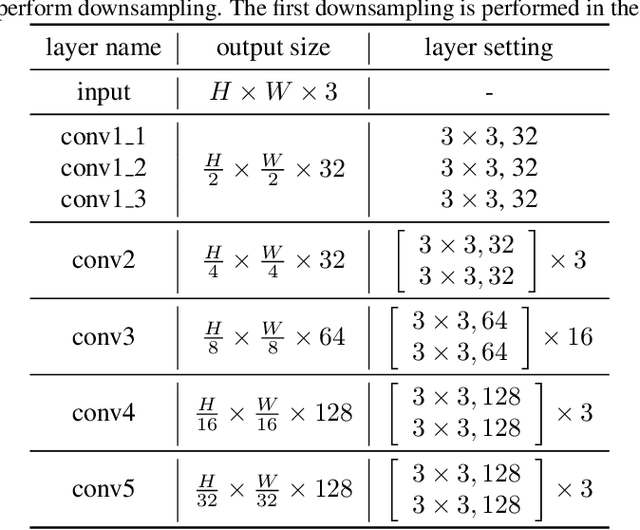
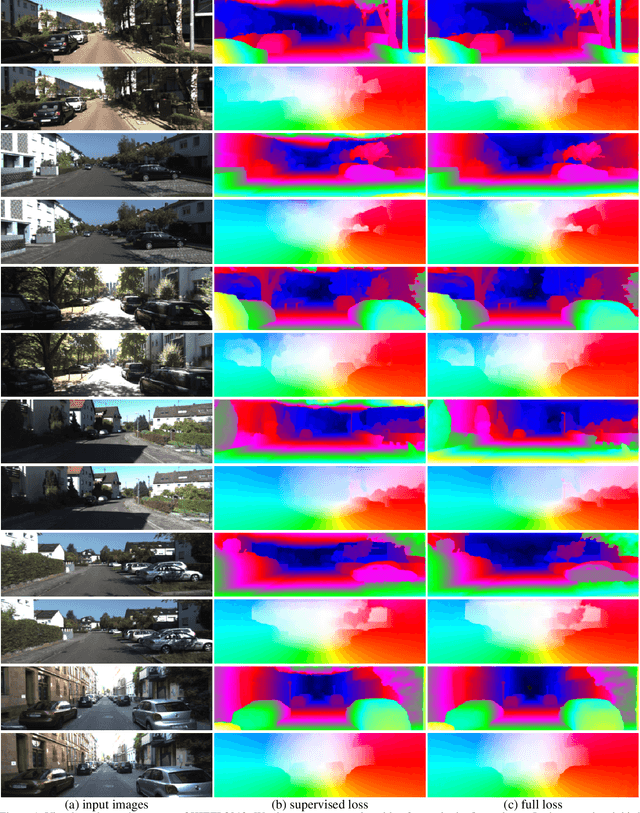
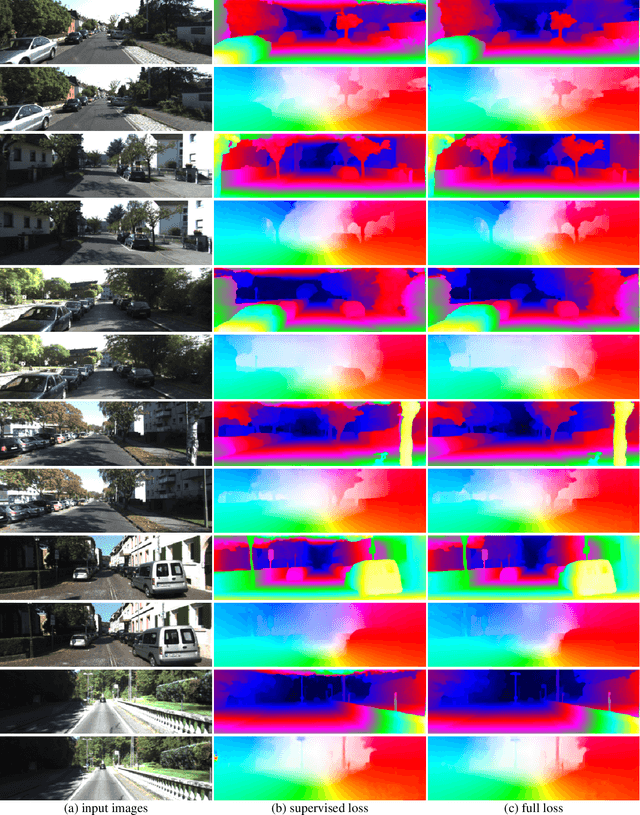
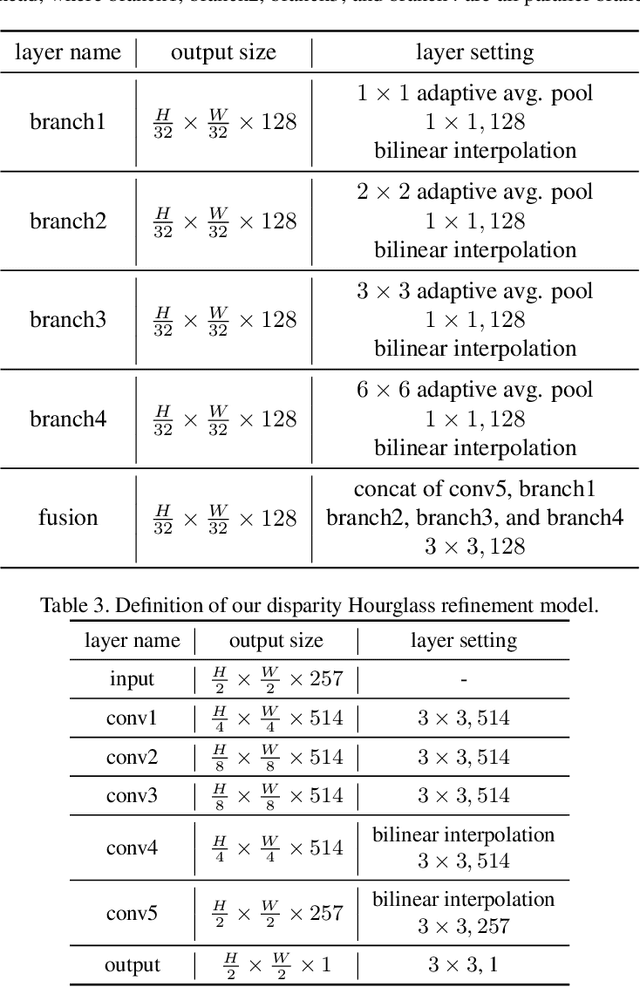
Abstract:We introduce a compact network for holistic scene flow estimation, called SENSE, which shares common encoder features among four closely-related tasks: optical flow estimation, disparity estimation from stereo, occlusion estimation, and semantic segmentation. Our key insight is that sharing features makes the network more compact, induces better feature representations, and can better exploit interactions among these tasks to handle partially labeled data. With a shared encoder, we can flexibly add decoders for different tasks during training. This modular design leads to a compact and efficient model at inference time. Exploiting the interactions among these tasks allows us to introduce distillation and self-supervised losses in addition to supervised losses, which can better handle partially labeled real-world data. SENSE achieves state-of-the-art results on several optical flow benchmarks and runs as fast as networks specifically designed for optical flow. It also compares favorably against the state of the art on stereo and scene flow, while consuming much less memory.
* ICCV 2019 Oral
Joint-task Self-supervised Learning for Temporal Correspondence
Sep 26, 2019
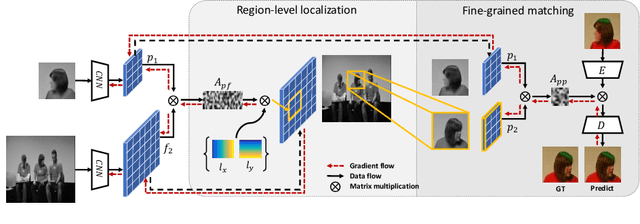

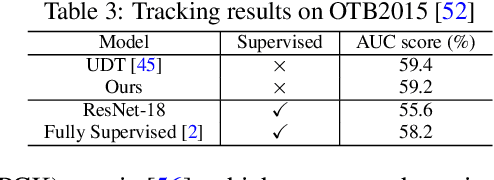
Abstract:This paper proposes to learn reliable dense correspondence from videos in a self-supervised manner. Our learning process integrates two highly related tasks: tracking large image regions \emph{and} establishing fine-grained pixel-level associations between consecutive video frames. We exploit the synergy between both tasks through a shared inter-frame affinity matrix, which simultaneously models transitions between video frames at both the region- and pixel-levels. While region-level localization helps reduce ambiguities in fine-grained matching by narrowing down search regions; fine-grained matching provides bottom-up features to facilitate region-level localization. Our method outperforms the state-of-the-art self-supervised methods on a variety of visual correspondence tasks, including video-object and part-segmentation propagation, keypoint tracking, and object tracking. Our self-supervised method even surpasses the fully-supervised affinity feature representation obtained from a ResNet-18 pre-trained on the ImageNet.
Learning Propagation for Arbitrarily-structured Data
Sep 25, 2019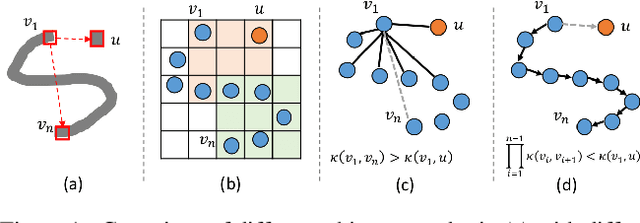



Abstract:Processing an input signal that contains arbitrary structures, e.g., superpixels and point clouds, remains a big challenge in computer vision. Linear diffusion, an effective model for image processing, has been recently integrated with deep learning algorithms. In this paper, we propose to learn pairwise relations among data points in a global fashion to improve semantic segmentation with arbitrarily-structured data, through spatial generalized propagation networks (SGPN). The network propagates information on a group of graphs, which represent the arbitrarily-structured data, through a learned, linear diffusion process. The module is flexible to be embedded and jointly trained with many types of networks, e.g., CNNs. We experiment with semantic segmentation networks, where we use our propagation module to jointly train on different data -- images, superpixels and point clouds. We show that SGPN consistently improves the performance of both pixel and point cloud segmentation, compared to networks that do not contain this module. Our method suggests an effective way to model the global pairwise relations for arbitrarily-structured data.
 Add to Chrome
Add to Chrome Add to Firefox
Add to Firefox Add to Edge
Add to Edge